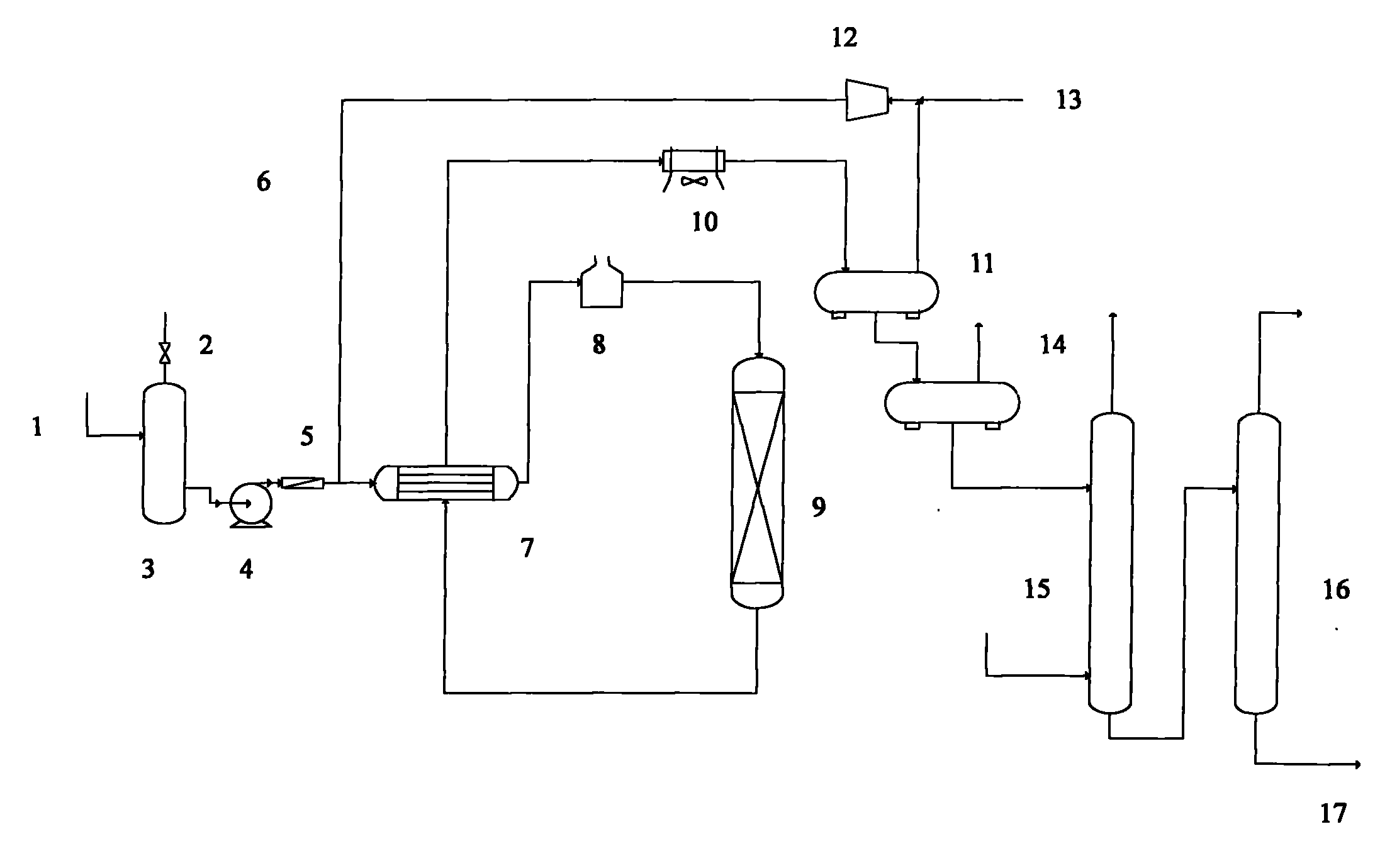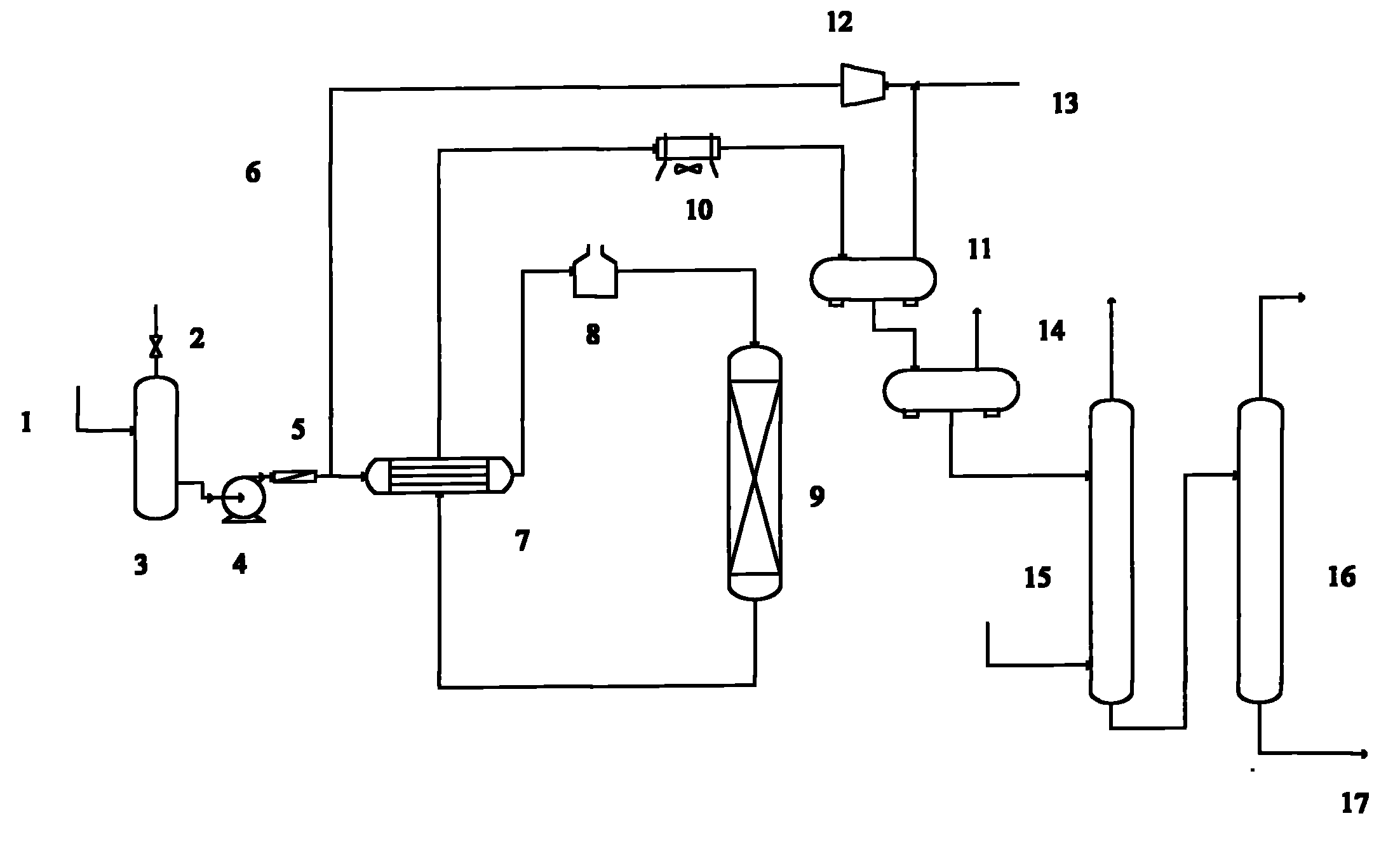Hydrofining method of secondarily processed gasoline fractions
A technology of hydrofining and gasoline fractionation, which is applied in the fields of hydrotreating process, petroleum industry, and hydrocarbon oil treatment. It can solve the problems of long process, reduced heat exchange efficiency, and high content, and achieves small investment and high pressure drop. , the effect of extending the operating cycle
- Summary
- Abstract
- Description
- Claims
- Application Information
AI Technical Summary
Problems solved by technology
Method used
Image
Examples
Embodiment 1
[0027] Example 1 - Hydrotreating of Coker Gasoline Distillate
[0028] See Table 1 for the properties of the raw material oil, see Table 2 for the operating conditions of the de-diolefin heat transfer mild pre-hydrogenation equipment and hydrogenation reactor, and see Table 3 for the properties of the hydrogenation products.
[0029] Table 1 Example 1 Raw Oil Properties
[0030] name
coker gasoline
Density (20℃), g / cm 3
0.7350
Distillation range, ℃
IBP
30
10%
58
50%
132
90%
195
EBP
220
Diene value, gI / 100g
6.4
Bromine value, gBr / 100mL
45
[0031] Table 2 Example 1 Heat exchange and mild pre-hydrogenation equipment and hydrogenation reactor operating conditions
[0032] catalyst
FZC-103 catalyst
FH-98 catalyst
0.60
0.35
pressure, MPa
3.8
3.8
Hydrogen oil volume ratio
300 ...
Embodiment 2
[0035] Example 2-pyrolysis gasoline hydrotreating
[0036] See Table 4 for the properties of the raw material oil, see Table 5 for the operating conditions of the heat exchange and mild pre-hydrogenation equipment and hydrogenation reactor, and see Table 6 for the properties of the hydrogenation products.
[0037] Table 4 Example 2 Raw Oil Properties
[0038] name
pyrolysis gasoline
Density (20℃), g / cm 3
0.746
Distillation range, ℃
IBP
35
10%
65
50%
134
90%
198
EBP
229
Diene value, gI / 100g
7.9
Bromine value, gBr / 100mL
65
[0039] Table 5 Example 2 Heat exchange and mild pre-hydrogenation equipment and hydrogenation reactor operating conditions
[0040] catalyst
SHT catalyst
FH-40C catalyst
0.45
0.35
pressure, MPa
4.0
4.0
Hydrogen oil volume ratio
400
400
volum...
PUM
 Login to View More
Login to View More Abstract
Description
Claims
Application Information
 Login to View More
Login to View More - R&D
- Intellectual Property
- Life Sciences
- Materials
- Tech Scout
- Unparalleled Data Quality
- Higher Quality Content
- 60% Fewer Hallucinations
Browse by: Latest US Patents, China's latest patents, Technical Efficacy Thesaurus, Application Domain, Technology Topic, Popular Technical Reports.
© 2025 PatSnap. All rights reserved.Legal|Privacy policy|Modern Slavery Act Transparency Statement|Sitemap|About US| Contact US: help@patsnap.com


